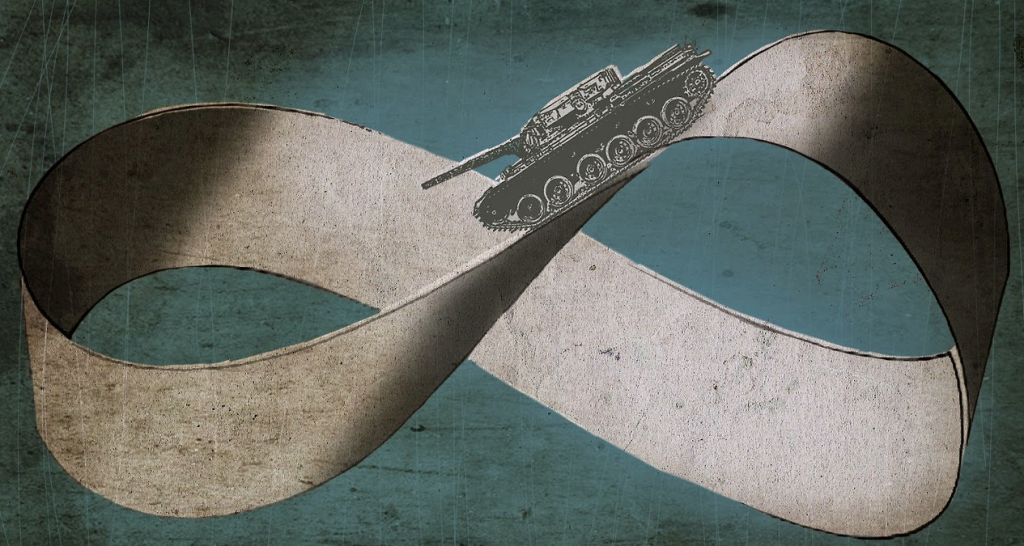 By Prof. Joseph H. Chung
By Prof. Joseph H. Chung
Introduction
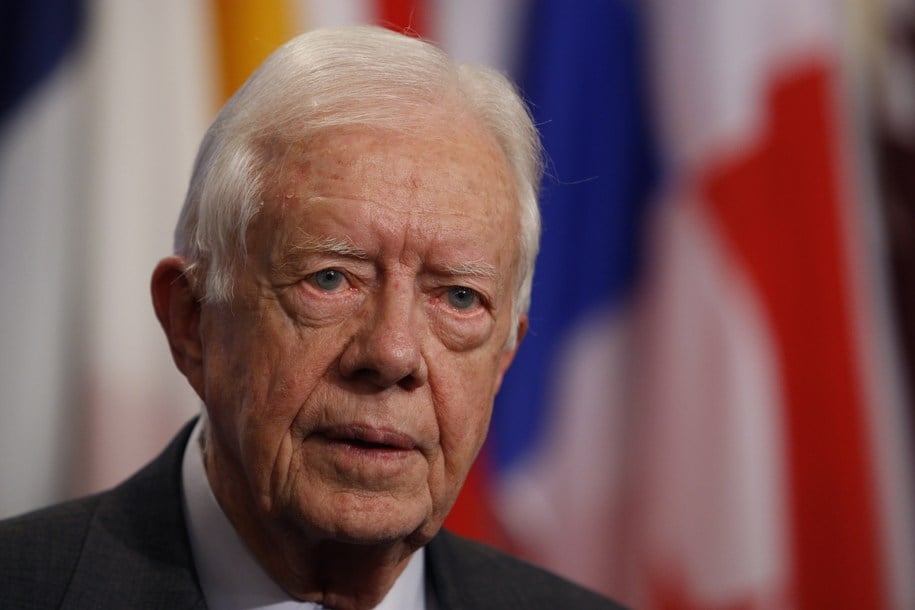 Former American President Jimmy Carter said in 2018 that in America, there were 226 years of wars since its independence which took place 242 years ago thus leaving only 16 years of peace.
Former American President Jimmy Carter said in 2018 that in America, there were 226 years of wars since its independence which took place 242 years ago thus leaving only 16 years of peace.
Since WWII, there were 32 American military conflicts involving dozens of countries. Some of these military conflicts have lasted for over twenty years and some others are still continuing.
In other words, the U.S. is a country of perpetual war. War is terribly destructive human activity. Millions of human beings have been sacrificed. Tens of trillions of dollars worth of housing, school, factories, hospitals and other infrastructure facilities have been destroyed in the countries which have been the target of American military attacks.
The perpetual war has destroyed the very foundation of freedom and democracy; it has prevented healthy and equitable economic development of the world; it has led to the violation of human rights; it has ruined traditional values of many countries and, above all, it has caused lasting human suffering.
America’s multi-trillion dollar perpetual war has denied and deprived millions of Americans of decent income, adequate housing, needed foods, necessary health care, safety on the street, reliable infrastructure facilities, essential education and other goods and services needed for descent living.
Before I go any further, I would like to quote the historical statement of President Dwight Eisenhower.
“Every gun that is made, every warship launched, every rocket fired signifies in the final sense a theft from those who hunger and are not fed, those who are cold and not clothed. This world in arms is not spending money alone, it is spending the sweat of its labourers, the genius of its scientists, the hope of children.” (President Dwight Eisenhower address to the North American Society of News editors, April 16, 1953)
In this paper, I am asking the following six questions:
- How many wars has the U.S. undertaken since WWII?
- How are the American wars organized?
- What is the purpose of the American wars?
- Who are the beneficiaries of the American wars?
- What are the negative impacts of the American wars?
- Will the American wars continue?
How many wars has the U.S. undertaken since WWII?
There are undoubtedly several ways of defining war. In this paper, I define war in terms of American military interventions. Defined thus, I have counted 32 wars undertaken by the U.S. since WWII.
Activist Post is Google-Free
Support us for just $1 per month at SubscribeStar
I have classified these wars in terms of the following categories:
- invasion (23 cases),
- “civil war” (7 cases), and
- multi-target war (2),
which gives 32 wars that took place since the WWII, in the course of the so-called “post war era”.
There are reasons to believe that there are still many undeclared military interventions conducted by war contractors and Special Operation Forces units spread in 1,000 bases in 191 countries. The following shows the list of American wars.
Invasions,
Korean War (1950-1953), Vietnam War (1955-1975); Cuban,Bay of Pigs (1961), Lebanon (1982-1984), Grenada (1983), Libya bombing (1984),Tanker War-Persian Gulf (1984-1987), Panama (1989-1990), Gulf War (1989-1991), Iraq War (1991-1993), Bosnia War (1992-1995), Haiti (1994-1999), Kosovo (1998-1999), Afghanistan (2001-2021),Yemen (2002-present), Iraq (2003-2011), Pakistan (2004-2018), Somalia (2007-present) Libya (2011), Niger (2013-present) Iraq (2014-2021), Syria (2014-present), Libya (2015-2019). [Ukraine, yet to be categorized]
Civil Wars:
Indo-China (1959-1975), Indonesia (1958-1961) Lebanon (1958), Dominican Republic (1968-1966), Korea DMZ (1966-1969), Cambodia (1967-1975) Somalia (1991-present).
Multi-target wars:
Operation Ocean Shield: location, Indian- Ocean (2008-2016), Operation Observant Compass: location, Uganda and Central Africa (2011-2017).
How are the American Wars Organized?
To understand the nature and the implication of the perpetual war in the U.S., it is necessary to introduce the concept of American Pro-War Community (APWC).
In literature and media, we use the notion of military-industrial complex (MIC) to describe the vast system of perpetual U.S. wars. But, actually, the system of perpetual war involves many more individuals and organizations than in the MIC.
The APWC is a tightly knit community promoting its interests at the expense of the wellbeing of ordinary Americans and the interests of the people of the target countries. It is so well organized and so well rooted and so powerful that it is quasi impossible to dissolve it.
The AWPC’s core group comprises the war corporations and the federal government led by the Pentagon, the Congress, the Senate and other government agencies.
Ultimate Gold and Silver Guide – FREE REPORT
There are two supporting groups comprising all sorts of institutions and organizations.
There is the group supporting the supply of war goods and services.
Then, there is the group supporting the creation of demand for war goods and services.
The efficiency of the whole system of producing and selling war goods and services depends on how the core group and the supporting groups can work in harmony together to attain the objectives of wars, namely, the maximization of profit and the intra-APWC sharing of the profit.
Supply of War Goods and Services
The supply of war goods and services is assured by war corporations which produce weapons, building contractors which build all sorts of buildings and manage them, catering services companies that provide foods and drinks for the GIs, information firms which offer information needed for wars and even the academics that offers ideas and technologies.
In the U.S. 40 major war corporations have annual sales of almost $ 600 billion.
The following table shows the importance of the five leading war corporations in U.S.
Table 1. Five major War Corporations: Annual Sales ($ billion) 2022 and Growth (recent years: %)
Note: LM (Lockheed Martin), NG (Northrop Grumman); GD (General Dynamics) Source
 The combined annual sale of the five leading firms in 2022 was as much as $ 241.8 billion of which $183.3 billon was for the sale of military goods and services, or 75.8% of the total sale.
The combined annual sale of the five leading firms in 2022 was as much as $ 241.8 billion of which $183.3 billon was for the sale of military goods and services, or 75.8% of the total sale.
The supply of war goods and services relies on the extensive production chain involving foreign and domestic providers of raw materials and intermediary products. In addition, the academics and information firms offer information, technology and other services needed for the production of weapons.
The following is a list of the well known universities which are deeply involved in American wars. Each one of these universities produces, for the war industry, a variety of war products and services.
In this paper, for each academic institution, just one typical product or service is mentioned.
No less than 70% of university research projects are funded by the Pentagon:
- The Boston College helps the Air Force
- The University of Massachusetts Lowell develops mono-technology for the Army.
- Tufts University improves of soldiers cognitive and physical performance
- MIT is producing so many war goods ns services that it is known as a “war corporation.”
- Columbia University and Brown University develops, for DARPA (Defence Advanced Research Project Agency), the neural engineering system
- Princeton University produces hardware for design and verification of open-source integrated circuit
- Dartmouth University sells machine learning
- Pennsylvania University develops artificial intelligence.
- Stanford University develops technology for chemical warfare and so many other war goods and service that it is considered to be in partnership with war corporations
- Harvard University develops educational materials for the war and it is the main source providing human resources to the war industries. By the way, it produced the napalm bomb widely used in the Korean War, Vietnamese War and other wars
- John Hopkins University makes tools needed for the evaluation of alternative offensive capability needed for battles in air sea, cyberspace
The sad story is that American universities depend on war money so much that they are losing their original mission.

Christian Sorensen (Understanding the War Industry, Clarity Press 2022) has something to say about this problem. He seems to think that universities are neglecting their original mission of producing and diffusing truth.
“But its intricate ties to the War Department show the university’s true colour carrying more about government funding than the nobility of academia.” (Sorenson: p.221)
By the way, I have found many useful information, data and ideas in Sorensen’s book, which is surely a significant addition to the critical literature of perpetual wars.
The information-technology corporations are also actively participating in the American wars. In fact, Amazon, Microsoft, and Google provide, for the military, clout computing which facilitates the reduction of human and material cost of wars.
Demand for War Products and Services
What distinguishes the war economy from the peace economy is the amazing fact that the supply generates the demand.
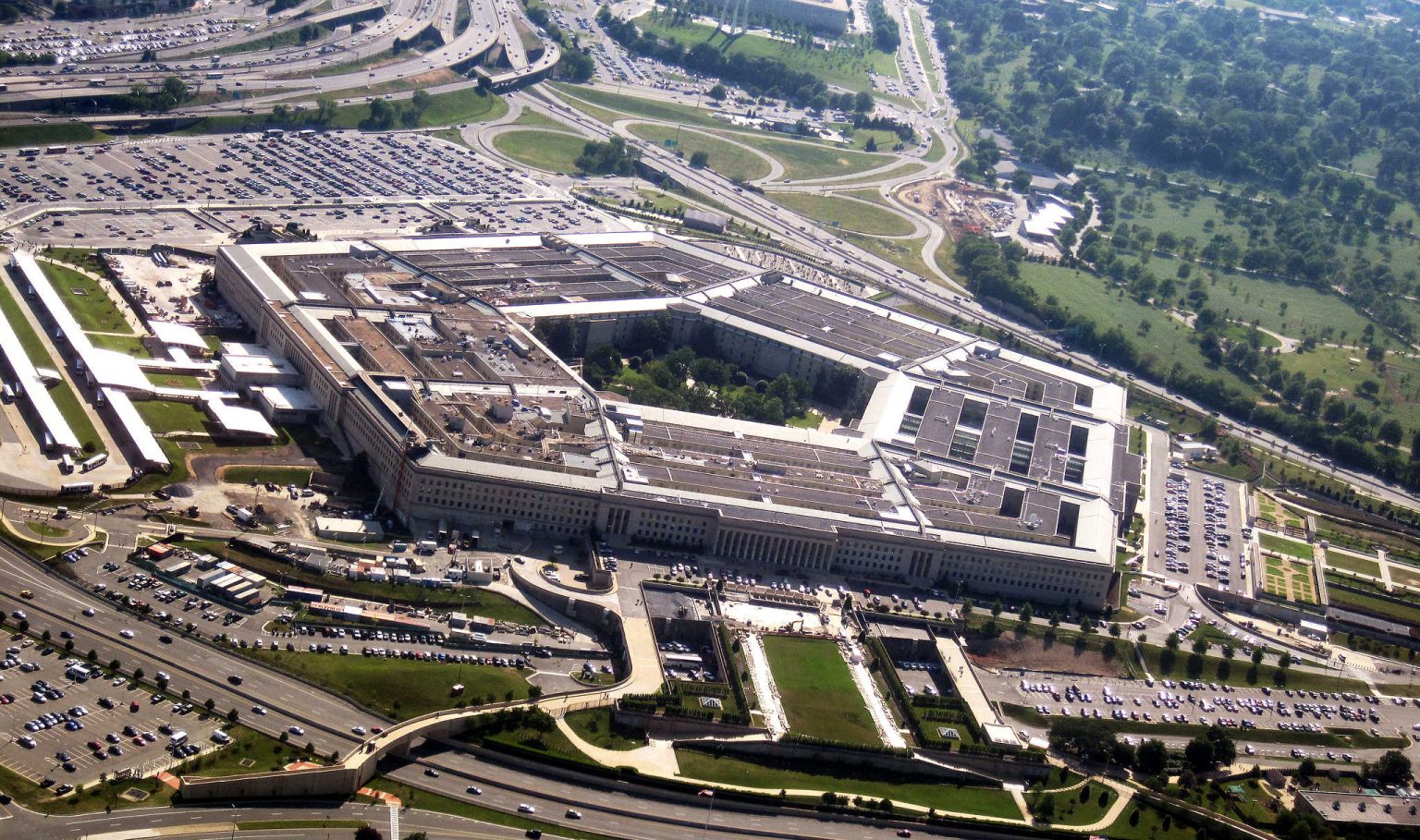 In the American war economy, the final demand for war goods and services is determined by the Pentagon (the Department of Defence) and some foreign countries.
In the American war economy, the final demand for war goods and services is determined by the Pentagon (the Department of Defence) and some foreign countries.
However, the Pentagon does not have all the information needed to estimate the demand for war so that it relies on the information provided by the war corporations.
Therefore, the war corporations which are supplier of war goods and services have the amazing role of determining the demand.
In this way, in the market of war goods and services, the supply determines the demand.
This is the root of perpetual nature of American wars and the making of profit going to the APWC.
Now, to have war, one has to have enemies. But, the war corporations do not have the research capacity to find real enemies or produce fabricated enemies. The role of finding or fabricating enemies goes to the think tanks which are lavishly funded by the war corporations.
When the think tanks find or manufacture enemies, new wars or the continuation of old wars are justified.
Now, on the other hand, the pressure groups put pressure on law makers and policy makers to recognize the identities of enemies produced by the think tanks; this is done through lobbying (bribes giving).
As for the media, they have the role of preparing the mind and the souls of Americans to accept the monstrous defence budget without being aware of the destructive consequences of the perpetual wars.
It goes without saying that both the pressure groups and the media are funded by the war corporations.
The demand for war goods and services created by these pro-war individuals and organizations is translated into the annual defence budget of the U.S amounting, in 2023, to as much as $886 billion.
Imagine this. Washington’s 2023 defence budget is 50% of South Korea’s 2023 GDP of $1.8 trillion. The American defence budget is 40 % of the global defence budget of $ 2.2 trillion.
The big five: Lockheed Martin, Raytheon Technologies, Boeing, Northrop Grumman, General Dynamics gets as much as $150 billion out of the defence budget.
Think Tanks
The think tanks play major role in perpetuating the American wars. Their function is to produce reports and papers to show the seriousness of crisis and the need for increasing military budget so that the crisis can be tackled by military force.
The following shows how some major think tanks are lavishly funded by war corporations. The data are provided by a Global Research paper (Amanda Yee: Six War Managing Think Tank and the Military Contractors that fund them, March 7, 2023).
The Center for Strategic International Studies (CSIS)
The CSIS received in 2022 $100,000 or more from following war corporations: Northrop Grumman, General Dynamics, Lockheed Martin, SAIC, Bechtel, Cummings, Hitachi, Hanhwa Group, Huntington Ingalls Industries, Mitsubishi Corp., Nippon Telegraph and Telephone, Raytheon, Samsung.
The Center for a New American Security (CNAS)
The CNAS received in 2021, $50,000 or more from the following war corporations: Huntington Ingalls Group, Neal Blue, BAE System, Booz Allen, Hamilton Intel Corp, General Dynamics.
Hudson Institute (HI)
The HI got, in 2021, $50,000 or more from the following war corporations: General Atomics, Linden Blue, Neal Blue, Lockheed Martin, Northrop Grumman, Boeing, Mitsubishi.
The Atlantic Council (AC)
In 2021, the AC received $50,000 or more from the following war corporations: Airbus, Neal Blue, Lockheed Martin, Raytheon, and SAIC.
The International Institute for Strategic Studies (IISS)
The IISS was given, in 2021, $25,000 or more by the following war corporations: BAE System, Boeing, General Atomics, Raytheon, Rolls-Royce, Northrop Grumman.
There was a case where a think tank expressed an “expert opinion” in order to protect the interest of its sponsor (war corporation). It happened on August 12, 2021.
The huge military contractor CACI which had a contract of $907 million for 5 years in Afghanistan was disappointed of the U.S. withdrawal from Afghanistan, which meant its profit loss.
Its think tank was the Institute for the Study of War (ISW). The president of ISW, Kimberly Kagan declared that the U.S. withdrawal would make Afghanistan become a second ground of Jihadism. By the way, retired General Jack Keane is a member of IWS.
Pressure Group
The pressure groups are led by individuals well connected to war corporations, the Pentagon and the congress. The following is the partial list of pressure groups.
- The Aerospace Industry Association(AIA): Its CEO is the former vice-president of a company producing rockets. AIA represents more than 340 aerospace and defence corporation
- The National Defence Industry Association (NDIA) has 1,600 members
- The political Action Committee
- The Association of United States Army(AUSA): It produces Industry Guide for war corporations
- Business Executives for National Security (BENS), It is composed of non-profit 450 business executives who discuss security issues
- The Association of Old Crows (AOC), It is a brotherhood of electronic war veterans and leaders of war. It is supported by war corporations such as AECOM and Raytheon
- The American Institute of Aeronautics and Astronomics (AIAA)
- The National Security Resource Board
- The War Dept Defence Policy Board
Pro-War Media
Most of American media are pro-war. There are several reasons why the media are not critical of the perpetual war, if not being outright pro-war.
First, Being corporate media, they are mainly concerned with making money rather than being concerned with the collective wellbeing of the American society.
The Corporate Media including CNN, MSMBC, Fox News attach program priority to the rating.
They have no opinion about the awfully destructive consequences of the perpetual war. Even if they have some useful opinions they do not dare to express them. When they express an opinion, they are usually referring to the opinion of the elite class.
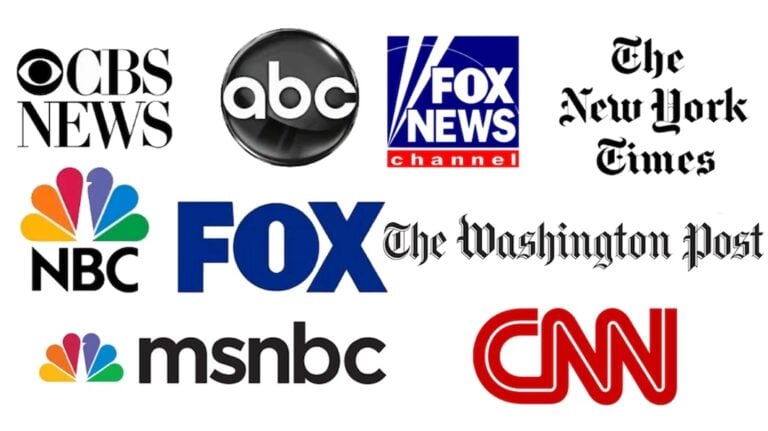 Second, it has been the long tradition in the U.S. that the media do not criticize the government.
Second, it has been the long tradition in the U.S. that the media do not criticize the government.
Third, the government censor the media, especially, the off-line media.
Fourth, the numbers of media are directly related to the war industry. For example, in Defence News, T. Michael Mosely, retired 4-star Air Force general wrote in April 2019 that the Air Force was woefully under equipped.
There is a long list of pro-war media mostly armed forces related media.
Fifth, war corporations openly put pressure on the media not to mention the root of war. For example,
“General Dynamics wants corporate media never to question the root cause of the war.” (Sorensen p: p.72)
Sixth, the Smith Mundt Modernization Act of 2012 allows greater propaganda on corporate media.
To sum up, the demand for war is formed by the coordinated pro-war opinions created by the war corporations, the think tanks, the pressure groups and the media.
These opinions are transmitted to the Pentagon, which determine the size of financial and human resources to be allocated to the war.
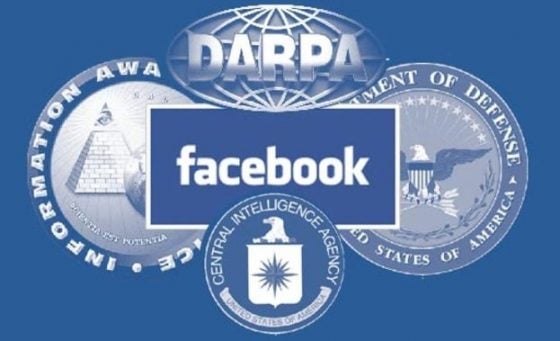 The remarkable coordination among these individuals and organizations looks like a well prepared symphony orchestra.
The remarkable coordination among these individuals and organizations looks like a well prepared symphony orchestra.
The think tanks play violin to make sweet sound for the war corporations;
The pressure groups play trumpet to make the sound louder;
The media play drums to draw attention of the public to the necessity of wars.
All these players are conducted by the war corporations.
What is the purpose of American wars?
There can be defensive purposes and offensive purposes of war. The defensive purposes can include the protection of national territory and national values such as religion, democracy and national assets representing the national tradition.
Then, there can be offensive purposes of war which can include the imperial invasion of a foreign country in order to change the political and economic regime, change religion, to appropriate the foreign country’s natural resources and maintain America’s hegemonic domination.
 There is one more offensive purpose, namely,
There is one more offensive purpose, namely,
In all probabilities, the defensive purposes are not relevant. No country dares to challenge American territory and its values. On the other hand, all of offensive purposes are relevant.
However none of the offensive “purposes” of American wars seem to have been attained.
- Christianity had for a long time hidden its presence.
- American democracy is falling rapidly.
- Regime-change war has ended up with regime destruction.
- America’s global hegemony has to overcome several challenges.
As for the expropriation of foreign countries natural resources, American imperialism should have been a success made possible through the worldwide value chain. Its main beneficiaries are American multinational corporations.
Now, with regard to the impact of the Perpetual American war on the American economy, the usual analysis model is military Keynesianism. A series of economic studies show that it can have a short run positive effect on the national economy, but in the medium term, it will harm the economy’s growth potential. In other words, war is harmful to the national (civilian) economy.
“After initial demand stimulus, the effect of increased defence spending turns negative around six years .After 10 years of higher defence spending, there would be 464,000 jobs less than the base line scenario with lower spending.” (Dean Baker, economist quoted in journals.openedition.org)
In short, American wars are not needed for the realization of defensive objectives.
Nor are they useful means for the materialization of offensive ends with the exception of the expropriation of natural resources of foreign countries.
Then, why does the U.S. continue its wars?
If the war continues despite its dubious results, there must be some people who find in the war some benefits. The inevitable conclusion is that these same people are the members of the American Pro-War Community (APWC).
Who are the Beneficiaries of American wars?
In order that the AWPC receive benefit from wars, the profit of war corporations must be abnormally maximized. In fact, the profit of war corporations must be very high due to these reasons.
First, war corporations receive the Pentagon’s research grants and tax incentives from the federal government.
Second, the use of Artificial Intelligence-based production systems can save greatly the cost of the war corporations’ production of war goods and services.
Third, war corporations enjoy the quasi monopoly status through corporate merging in the sector of highly specialized weapon production. The merging of Lockheed with Martin is a typical example.
Fourth, in a situation of Pentagon-war corporation collusion, the Pentagon’s acceptance of a high contractual price is of significance.
The Privatization of War. The Everlasting Corruption Culture
 Once the high corporate profit is assured, the next step of keeping perpetual wars is the intra-AWPC sharing of the corporate profit.
Once the high corporate profit is assured, the next step of keeping perpetual wars is the intra-AWPC sharing of the corporate profit.
This is done through bribes. Having received bribes, pro-war policy makers and pro-war law makers must go along with war corporations lobbying in favor of “more wars”.
Bribes are given to the policy makers and law makers so that they accept what the war corporations ask for. This is the beginning of an everlasting corruption culture.
The following cases illustrate some of the dimensions of the corruption culture:
In 2012, the war corporations gave $30 million and in 2014 they gave $ 25.5 million to the Senate Armed Service Committee.
Christian Sorensen shows the source of corporate funds given to the 25 members of the Senate Armed Services Committee. The following gives some examples.
- John McCain (R): General Electric, Raytheon and several other war corporations
- Jeanne Shaheen (D): Boeing General Electric
- Lindsey Graham (R): Northrop Grumman, Raytheon
- Bill Nelson (D): Lockheed Martin, Raytheon
A former CIA lobbyist made a meaningful statement regarding the state of corruption:
“Years of legalized bribery had exposed me to the worst elements of our country’s political working. Not even my half million-a-year salary could weigh my conscience…Today, most lobbyists are engaged in a system of bribery but it is legal kind, the kind that runs rampant in the corridors of Washington.” (Sorensen: p.65)
For the last presidential election, Lockheed Martin donated $ 91 million. Fifty eight members of the House Armed Service Committee received in average $79,588 from the sector (war industry), or three times more than other representatives. Lobbying expenditures by the member of the warmongering community was $247 billion during the last two presidential elections.
The Swinging-Door Relationship
However, in addition to the bribe system, there is the swinging-door relationship between the war industry and the Pentagon.
The swinging-door relations result in the industry’s direct participation in the defence policy making. In fact, the decision makers in the Pentagon and the decision makers in the war industry are the same people.
The first swinging door allows the two way traffic of corporation leaders and the Pentagon leaders. Here are some cases of swinging door system of decision making.
- Ryan McCarthy assistant to Robert Gate, War Secretary went back to Lockheed Martin. He is now Under Secretary of Army.
- General James Mattis is now on the Board of Directors of General Dynamics, then, he became Secretary of War, then back to General Dynamics
- An Assistant Secretary of War was president of Goldman Sachs focus on oil and gas
- An administrator of the Defence Technical Information (DTC) has directorship in multiple corporations
- The Under Secretary of War in charge of the finance of the Pentagon was partner of an accounting firm, Kearney which has strong business with the Pentagon
- Lester Lyle, director general of General Dynamics was Air Force National Commander
- Wilbur Ross, US Commerce Secretary had the following members of his advisory group: CEOs of Apple, Visa, Walmart, Home Depot, IBM, US Chamber of Commerce, the Association of Community College.
There are also what we might describe as the “three way traffic swinging-doors”, namely
“The Corporations, Pentagon and Think Tanks Triad”
Some of the key members of the Washington war camp work for war corporations, the Pentagon and think tanks. In this dynamics, The Center for Strategic and International Studies (CSIS) is often implicated.
The bribery system and the swinging-door apparatus of policy making is necessarily supportive of the culture of corruption.
“Corporate America as a whole was also corrupting hearts and minds numbing the public with entertainment and deluging with commercialism.” (Sorensen: p.60)
What are the negative impacts of American wars?
There are internal and external negative impacts of American wars. The internal negative impacts of the American wars include human cost and economic cost.
The human cost of American perpetual war is high. Nobody knows how many Americans are killed or wounded. But some estimates say that as many as 50,000 Americas have been wounded in addition to tens of thousands of GIs who have been killed due to the perpetual wars.
“There is no honest accounting of the where how and why we are killing-how United States citizens are being protected and what security benefits are actually accruing to the United States in continuing perpetual war.” (William M. Arkin: Newsweek)
The economic and social costs are high. The destruction of America’s potential economic growth is attributable to insufficient investments in education, health and infrastructure.
The U.S. invests almost $1.0 trillion a year to sustain its perpetual wars, forcing Americans to contribute $2,200 a year (in taxes) to finance the wars.
The opportunity cost of American wars is high. The opportunity cost means investments which have been avoided due to the wars.
Here are some examples of “opportunity costs”:
- $70 billion to fight poverty;
- $42 billion to repair 43, 586 deficient bridges;
- $10.6 billion for the proposed program for the Center for Disease Control;
- $11.9 billion for the Environment Protection Agency;
- $17 billion for children who are starving.
Besides, Washington needs money to save 100,000 Americans who die every year from drug overdoses.
Washington must finds way to eliminate street killings which happen four times every single day.
More than 10 % of Americans are not covered by medical insurance. Even those who do have medical insurance, the insurance cost is beyond the reach of the majority of Americans.
Another serious internal negative impact of the war is increasing public debt.
In 2023, the U.S. public debt is $ 31 trillion as against $ 27 trillion for its GDP. This means that public debt is 14.8% more than GDP.
A good part of this debt is attributable to wars. In fact, the Iraq war produced a U.S. public debt of $3 trillion.
This is a very dangerous situation, because with this kind of public debt, the country’s fiscal policy becomes utterly useless.
Now, as for the external negative impact of American wars, the impacts are beyond description.
Almost 1.3 million people were killed in Iraq, Afghanistan and Pakistan alone, not to mention. the flow of millions of refugees.
Over the years, the perpetual American wars have ruined national economies; they have undermined religions and traditional values; they took away the hope for better life of the people of the countries which have been the targets of American wars.
What is really disturbing is this. The American wars are supposed to promote and keep world safer. But, in reality, the American wars have instead worsened global security and safety of civilians.
“After two decades of fighting, in fact, not one country in the Middle East – not a country in the world – can argue that it is safer than it was before 911. Every country that is now a part of the expanding battle field of perpetual war is a greater disaster than it was than decade ago.” (newsweek.com ibid).
So, who are benefitting from American wars? Sorensen offers an answer.
“The only people who ultimately benefit from militarized drugs war are perfidious flag officers, the D.C. regime executives, war corporations and a few native American elites.” (Sorenson: p. 298)
I may go further. I say that the beneficiaries are the members of the APWC.
Will the American wars continue?
Despite its terribly negative impact, these wars will continue, because it is beneficial to the APWC.
The perpetual war requires the following strategies: perpetual existence of enemies on the one hand and, on the other, the adoption of invisible and politics-free war.
If there is no demand for the war, there will be no war.
Hence, in order that the war perpetuates, there must be sustained demand for war.
But, in order that there be demand for war, there must be crisis and there should be crisis making countries or individuals. These countries and individuals become enemies of America.
There have allegedly been several waves of military crises in the eyes of APWC.
The first wave of crisis: the spread of communism, 1950-1989
The second wave of crisis: the threat of terrorism, 1990-present
The third wave of crisis: danger of nuclear proliferation, 1950-present
The fourth wave of crisis: the war on drugs, 1990-present
The fifth wave of crisis: human right violations 2001-present
Thus, there are several ongoing crisis and enemies. Hence, the APWC has little to be concerned with the lack of enemies.
According to William M Arkin, Washington has bombed or is bombing these countries: Afghanistan, Iraq, Syria, Pakistan, Somalia, Yemen, Libya, Niger, Mali, Uganda Moreover, there are ten more countries which might be bombed. These are mostly African countries including Cameron, Chad, Kenya and 7 other countries.
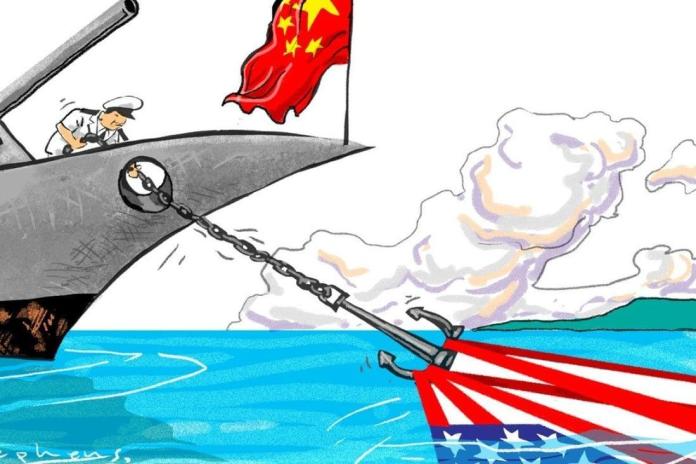 Moreover, the APWC is used to invent enemies. The probable next crisis target could be the “Yellow-Peril crisis” involving China and other Asian countries.
Moreover, the APWC is used to invent enemies. The probable next crisis target could be the “Yellow-Peril crisis” involving China and other Asian countries.
President, Joe Biden has decided to intervene in case of “crisis” in foreign countries even without the authorization of the countries involved. This can provide a lot of potential enemies.
Anyway, as far as the existence of enemies is concerned, the AWPC has little to be worried about. There will be plenty of them, if not, the APWC will invent them.
For instance, not-being pro-U.S. could be treated as crisis and crisis-maker, categorized as an enemy of America.
The next hurdle to overcome for APWC is to tackle the anti-war movement in the U.S. and elsewhere in the world.
The solution is to find ways of making wars invisible, saving American lives but profitable. This can be done through the use of unmanned weapons and production cost saving by using AI-based technology, which allows long-distance warfare by virtue of “hub-spoke” war strategy under which one can attack the enemy without being present at the battle ground.
More and more, war is undertaken by a system of hub-spoke. In the current war against terrorism, hubs are located in several Middle East countries, Kuwait being the Army hub and Bahrain being the Navy hub. The spokes are spread throughout the world, especially in the Middle East and Africa.
William M. Arkin describes the efficiency of the hub-spoke model of war.
“It is so little understood, so invisible, so efficient, even so as four successive presidents have promised and then tried to stop warfare, the spokes have grown and expanded.”
The reason for developing this type of warfare is the need for being free from anti-war public and anti-war politics.
“The War Brings Money”. The Vicious Circle of Human Greed
But the most important reason for the perpetuity of America wars is the vicious circle of human greed.
- The war brings money;
- Money invites wars;
- Wars bring in more money;
- More money leads to even more wars and ad infinitum.
This is the vicious circle of human greed.
Since human greed has no boundary, American wars will remain perpetual.
 Thus, American wars can go on and on until there will be no more valuable enemies.
Thus, American wars can go on and on until there will be no more valuable enemies.
In other words, the war will go on until the total destruction of the world.
So, to save the world, the perpetual American wars should be stopped.
*
Dr. Joseph H. Chung is professor of economics at the University of Quebec in Montreal (UQAM), he is member of the Center of Research on Integration and Globalization of (CEIM-UQAM). He is Research Associate of the Centre for Research on Globalization (CRG).
Image: Anthony Freda Art — “Endless War”
Become a Patron!
Or support us at SubscribeStar
Donate cryptocurrency HERE
Subscribe to Activist Post for truth, peace, and freedom news. Follow us on SoMee, Telegram, HIVE, Flote, Minds, MeWe, Twitter, Gab, What Really Happened and GETTR.
Provide, Protect and Profit from what’s coming! Get a free issue of Counter Markets today.

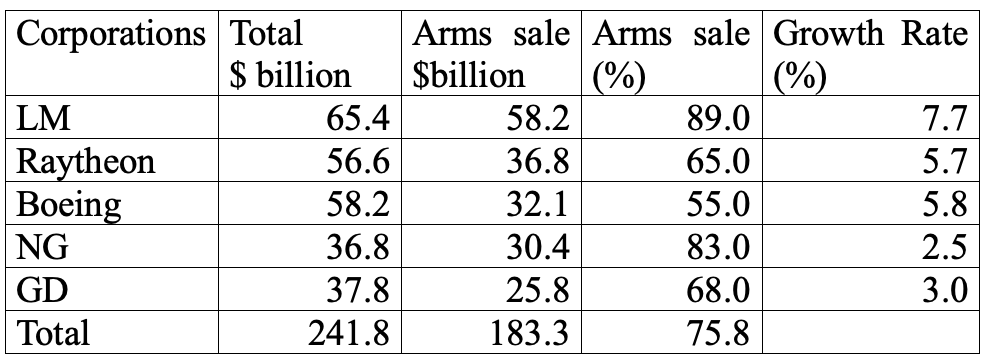
Be the first to comment on "America’s Perpetual War: Six Questions"